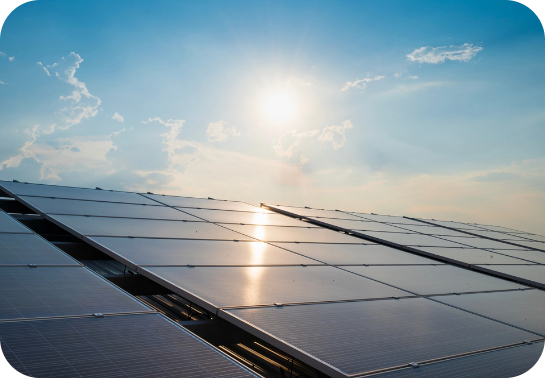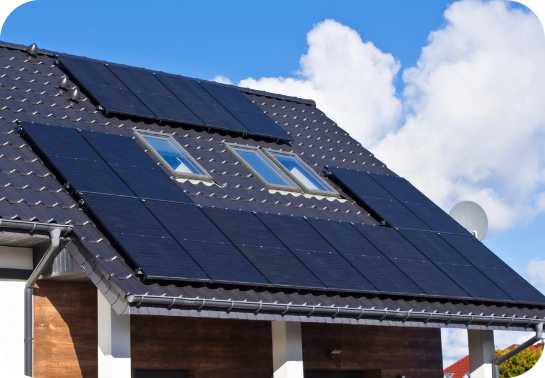Solar Power Purchase Agreements

Solar power is becoming increasingly popular these days. Private residences and commercial establishments now recognize the advantages of solar power, namely its sustainability and cost-efficiency. However, even with the federal solar tax credit, owning a solar power system can be costly to some.
To help promote the use of solar power, companies and the government have various programs to make purchasing a solar power system easier. A solar power purchase agreement is an option for those who cannot afford the upfront payment of a solar power system.
What is a Power Purchase Agreement or PPA?
A power purchase agreement, or PPA, is a form of solar financing that commonly used in renewable energy. The developer provides the equipment and supplies the buyer with a certain amount of energy at an agreed price over a certain period of time.
A solar power purchase agreement or PPA is similar to a Solar Lease, wherein the developer retains ownership of the solar equipment. The main difference is the product or service that the buyer is paying for. With a Solar Lease, the buyer pays to rent the solar equipment, while in a Solar PPA, the buyer only pays for the energy they consume. Solar power purchase agreements are also significantly longer, as some can last up to 25 years.


Who Needs a PPA?
Solar power purchase agreements can be helpful to any entity or individual, whether private or public that is looking to take advantage of solar power without taking responsibility for the equipment. Solar panels provide a sustainable and cost-efficient source of electricity. This makes a solar power purchase agreement worthwhile to a range of individuals and establishments.
That said, one key consideration when choosing between a PPA and a solar purchase option such as a solar loan, is whether or not you would be able to benefit from claiming the Federal Solar Tax Credit. With a PPA, the tax credit is claimed by the company that owns the equipment with it’s value passed to the consumer through the solar electricity rate. This makes the PPA especially an especially beneficial option for homeowners without much federal tax liability.
Why Do We Use PPAs in Renewable Energy Projects?
Solar power purchase agreements play a significant role in developing solar power. With the advancement of technology, solar energy is becoming more popular. Solar PPAs create a more conducive setting for its development.
What are the Advantages of Power Purchase Agreements?
Solar power purchase agreements offer several advantages, making them attractive to businesses and establishments.


What are the Disadvantages of PPAs?
Identifying your need before entering a solar power purchasing agreement is important, as a solar power purchasing agreement is imperfect. There are situations wherein it may be a disadvantage to the buyer.
Calculating Savings Per Month Using Solar Power
One of the most significant advantages that makes solar power attractive is how much savings you can get. After you start using solar power, you will notice your electricity bill decrease.
To compute your savings, you will need to know your electricity consumption and the price. For example, if your annual consumption is 10,500 kWh at 12 cents, you multiply these to get your total expense. In the example, the total is $1,260 per year.
Next, determine how much power your solar panels generate and deduct that from your total consumption. For example, if your solar panels can generate 10,000 kWh, you have 500 kWh left over. Multiply the remaining kWh, 500 in the example, with the cost per kWh. If at 12 cents, that would be $60 per year. This is the amount that you need to pay for the electricity you get from the grid.
Lastly, deduct the price of leftover kWh from your annual electricity expense. Using the values in the example, that is $1,260 less $60, making your yearly savings $1,200.

Types of Power Purchase Agreements
A solar power purchase agreement supports and facilitates the purchase of solar power. It is pretty flexible to accommodate and adapt to the buyer’s needs. In general, there are three common types of power purchase agreements.
On-Site PPA
As the name suggests, an on-site PPA is found within the buyer’s property. For example, a third-party developer will install the equipment inside the buyer’s premises. The equipment remains inside the location and is maintained by the developer during the length of the power purchase agreement.
Off-Site PPA
An off-site PPA takes solar power to a whole new level, providing power to a facility located elsewhere. This is ideal for buyers who do not have space within their premises or those who do not have a location ideal for solar power generation. To do this, the equipment is installed in a different place, and the electricity generated is injected into the grid. Buyers still consume grid electricity but offset their consumption by supporting the third-party developer or provider.
Green PPA
A Green Tariff is a specialized arrangement offered by utilities or electricity providers to their customers who want to purchase renewable energy. It allows customers to support and receive electricity from renewable energy sources, even if they are unable to generate renewable energy on-site or directly procure it from off-site projects.
Go Solar with Axia
A solar power system has several benefits, which is why it has increased in popularity over the decade. Purchasing one has also gotten easier. Regardless of their needs, buyers will be able to find the right option in purchasing their own solar power system. If you want to know more, we at Axia are always eager to help you. Visit our website, and we will help you purchase your solar power system.